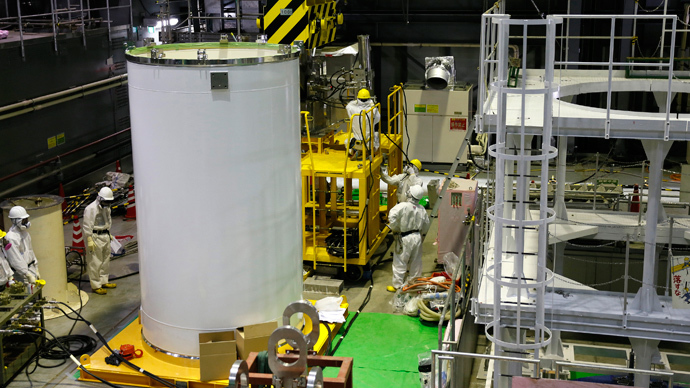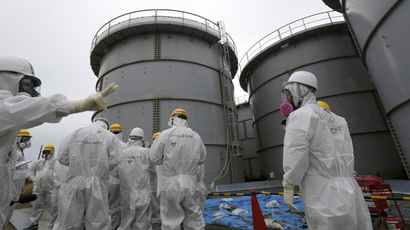Record outdoor radiation level that ‘can kill in 20 min’ detected at Fukushima

Outdoor radiation levels have reached their highest at Japan’s Fukushima nuclear plant,warns the operator company.Radiation found in an area near a steel pipe that connects reactor buildings could kill an exposed person in 20 minutes,local media reported.
The plant’s operator and the utility responsible for the clean-up
Tokyo Electric Power Company (TEPCO) detected record radiation
levels on a duct which connects reactor buildings and the 120
meter tall ventilation pipe located outside on Friday. TEPCO
measured radiation at eight locations around the pipe with the
highest estimated at two locations - 25 Sieverts per hour and
about 15 Sieverts per hour, the company said.
This is the highest level ever detected outside the reactor
buildings, according to local broadcaster NHK. Earlier TEPCO said
radiation levels of at least 10 Sieverts per hour were found on
the pipe.
The ventilation pipe used to conduct radioactive gasses after the
nuclear disaster may still contain radioactive substances, TEPCO
added.
The earthquake in March 2011 triggered a tsunami that hit Japan’s
coast, damaging the Fukushima Daiichi plant and causing the
meltdown of three nuclear reactors. The crippled reactors burnt
through the concrete basement while the water used to cool them
has been leaking into the soil and contaminating the ground water
on the premises of the nuclear facility. The radioactive water
stored at the site has been seeping into the Pacific Ocean.
The water leakage has raised health concerns among Japan’s
neighbors. For instance, South Korea has been testing fish caught
off the country's coast, according to the country’s fisheries
ministry.
Meanwhile, the chairwoman of the US Nuclear Regulatory Commission
assured that the radioactive water will reach the US West coast
at safe levels.
“The highest amount of radiation that will reach the U.S. is
two orders of magnitude - 100 times - less than the drinking
water standard,” Allison Macfarlane said in Tokyo on Friday
as cited by Bloomberg. “So, if you could drink the salt
water, which you won’t be able to do, it’s still fairly
low.”
Currently 400 tons of contaminated water is being produced at the
site on a daily basis. In an attempt to solve the storage problem
the International Atomic Energy Agency (IAEA) proposed on
Wednesday to consider dumping toxic water into the ocean after
lowering the level of radioactive materials.
"Regarding the growing amounts of contaminated water at the
site, TEPCO should... examine all options for its further
management, including the possibility of resuming controlled
discharges (into the sea) in compliance with authorized
limits," the IAEA said in a statement.
TEPCO has been testing a high-tech water processing machine
called ALPS, which can remove all radioactive materials from the
water except tritium. However, the low-energy isotope is
considered to be less dangerous than other radioactive isotopes
such as caesium and strontium, also contained in the tainted
water.














